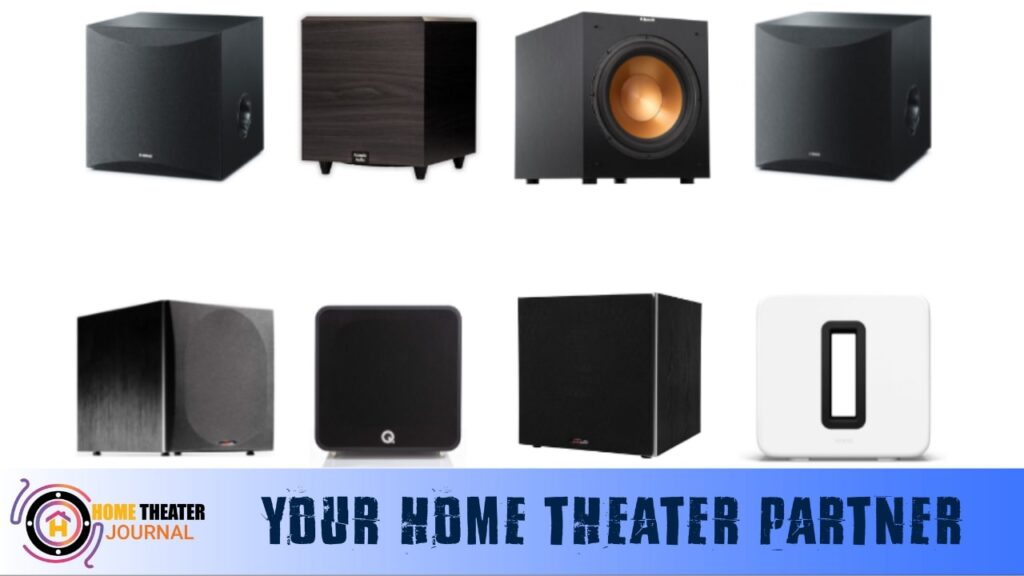What Does a Subwoofer Do | Guide
Do you own more than one speaker? There are more devices in your house than you realize. Think about the phone, computer, TV, and car. Speakers are essential equipment whether you’re listening to music, watching TV, or browsing the web.
A good sound system is optional for audiophiles. For those who are new to audio technology, selecting the right equipment can take time and effort.
You can instantly enhance your sound with a subwoofer, one of the best types of speakers. Whatever you listen to will have deeper bass and richer sound.
Find out how subwoofers work, where they can be used, and how to choose one.
What is a subwoofer?

Frequencies are inherent to all sounds in the world. A higher pitch has a higher frequency; the opposite is true for a lower pitch.
Regular speakers or surround sound systems can’t reproduce low frequencies properly. Many movies and music sound flat because of this.
In music, subwoofers (or “subs”) are used to amplify the sub-bass and bass frequencies.
Subwoofers make it possible for listeners to feel the sound, whereas regular speakers can only hear it. Bass guitars, pipe organs, and kick drums are instruments that are typically found in the frequency range between 20 and 200 hertz. As well as adding depth to voices and enhancing movie sound effects, it also improves the quality of deep voices.
The subwoofer is likely to blame if you’ve ever experienced shaking in your chair during a movie.
Subwoofers may be the perfect addition to your existing sound system, depending on what devices you already have. As a result, subwoofers eliminate the strain your speakers are under to reproduce the audio’s full sound, enabling you to experience a film or artist’s work not only as a viewer but also as a listener.
How subwoofers work
There are many factors to consider when understanding how a subwoofer works. The vibrations they send down your spine, or ripples in a glass of water, can shock you if you haven’t seen one in action.
There are various sizes of subwoofers, or “woofers” (yes, like a dog). A woofer’s overall size is determined by the subwoofer’s base size and the targeted frequency.
Subwoofers produce sound and sensation as woofer cones on the subwoofer and speakers move in sync with one another due to components that can boost or lower frequencies.
Where to use a subwoofer
It can be challenging to determine what type of subwoofer you need. However, there are some things to remember if you want to add a subwoofer to a car stereo or a home theater system.
Home theater subwoofer
The main purpose of a home theater subwoofer is to enhance the depth and width of the soundstage of your central sound system.
A bouncing sound wave is created in the omnidirectional room. Bass frequencies are sensitive to factors such as room size and furniture arrangement. A standing wave or bass null could be formed if the waves bounce.
- Standing waves: These waves are caused by an excess of bass energy that lacks definition due to the room’s size and the soundwave’s length.
- Bass nulls: Sound waves are canceled out by reflecting sound waves, resulting in a dead spot.
A subwoofer might require some work to install in your home. You can place it in corners surrounded by sound-absorbing devices or a bookshelf filled with books to help reinforce the bass. Finding the best position for your home theater requires an understanding of the environmental factors in your home, such as its natural acoustics.
Car subwoofer

Do you ever find yourself shaking your car when you are driving next to a car playing bass-heavy music? An excellent subwoofer does exactly that.
A car’s make and model determine the standard sound system. Since cars are becoming more advanced, most sound systems require professional installation.
Choosing a car subwoofer should consider these factors.
- Size: Larger subwoofers have richer bass, so space is crucial for placing them under the seat or trunk.
- Enclosure type: There are two kinds of enclosures for the subwoofer. All frequencies benefit from sealed enclosures since they produce more profound bass. Rap and house music genres benefit from ported enclosures because they are louder.
- Power: RMS indicates how much power can be handled by a subwoofer. More bass means a higher RMS.
- Sensitivity: An indicator of how much voltage a sub wants to generate or how much power it needs to generate a particular volume, expressed in sound pressure level or SPL. A higher SPL rating means a higher sensitivity and lower power requirement.
- Impedance: To get the best sound, your amp and subwoofer must have the same impedance measured in ohms.
Your music will sound richer once you choose and install the right specifications. The bass response of subwoofers is much better than that of speakers alone, so you can listen to sounds that speakers cannot reproduce. Your music will sound much less distorted at high volumes if you have quality subs in your car.
Most people face a problem with How To Make Subwoofers Louder. In this blog, we discuss all the points on how to increase the volume of the subwoofer.
What Does a Subwoofer Do | A list of popular subwoofer types
Understanding passive and active subwoofer configurations will help you learn more about what and how they work.
External amplifiers provide the power for passive subwoofers to maintain bass effects through their subwoofers. It requires an AC power source or outlet, as it has an amplifier built-in. There is usually a difference in power between active and passive subwoofers.
Subwoofers come in different styles and serve different purposes outside of those configurations.
- Ported: This is an additional hole or port which allows air to escape from the enclosure to increase the bass level. Subwoofers give a rich and thick sound and are sometimes called bass reflex speakers.
- Sealed Cabinet: No port or passive radiator is in a sealed cabinet. There are fewer booms and peaks, but the sound has less depth.
- Passive Radiator: Two passive radiators are installed instead of a port on the amp. It is common in Bluetooth speakers to allow sound to escape with a more excellent range.
- Front/Down Firing: A subwoofer that fires from the front or down according to the placement of the speakers. This speaker system emits sound from both the front and the sides, with the speakers pointing forward. For elevated speakers, the sound is directed downward and toward the ground.
- Bandpass: This subwoofer allows you to designate the bass levels you want to be reproduced through your speakers by separating them into two chambers. One chamber has a port that lets you release radiation from the front cone, and the other chamber has three ports.
- Horn Loaded: By spreading sound in various directions through a longhorn speaker, it captures the sound that would typically leak. Among all subwoofer types, this one is known for its loudness.
It is important to note that each subwoofer style works best in a specific environment. You should consult a sales representative or expert before purchasing a new sound system.
Conclusion:
In the world of audio technology, subwoofers play a crucial role in enhancing the overall sound experience. By focusing on lower frequencies and bass, subwoofers bring depth, richness, and a tactile dimension to music, movies, and more.
Whether you’re setting up a home theater system or upgrading your car’s audio, understanding the different types of subwoofers, their features, and how they interact with your space is essential. With the right choice of subwoofer and proper installation, you can elevate your audio enjoyment to new levels, feeling the music and movie sound effects in a way that regular speakers alone can’t replicate.
FAQs
What is the purpose of a subwoofer?
A subwoofer is a type of speaker designed to reproduce low-frequency sounds, intense bass and sub-bass frequencies. It adds depth, richness, and physical sensation to audio, enhancing the overall listening experience.
How does a subwoofer work?
Subwoofers use large woofer cones to move air and create low-frequency vibrations. These vibrations produce the deep bass sounds that regular speakers struggle to reproduce. Subwoofers can be configured in various ways, and their design impacts how effectively they generate and project these low-frequency sounds.
Where should I use a subwoofer?
Subwoofers can be used in various settings, such as home theatres and car audio systems. In-home theatres, they help balance sound by filling in low-frequency gaps and creating a more immersive experience. In cars, subwoofers enhance bass-heavy music and provide a thumping audio presence.
What factors should I consider when choosing a subwoofer for my car?
When selecting a car subwoofer, consider factors like size, enclosure type (sealed or ported), power handling (RMS), sensitivity, and impedance. These specifications determine the subwoofer’s performance and compatibility with your vehicle’s sound system.
What are the different types of subwoofer configurations available?
Subwoofers come in various styles, including ported (bass reflex), sealed cabinet, passive radiator, front/down firing, bandpass, and horn-loaded. Each type has its unique design and sound characteristics, making them suitable for different environments and preferences. Choosing the right type depends on your desired audio outcome and setup.

